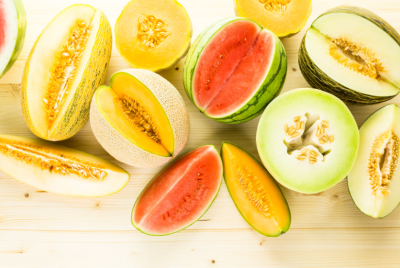Artificial Food Coloring Sensitivity: Unveiling the Hidden Reactions
Artificial Food Coloring Sensitivity: Unveiling the Hidden Reactions
Unveiling the Truth: Artificial Food Coloring Sensitivity
Are you one of those individuals who experience unexplained reactions after consuming certain colorful treats? If so, you might be dealing with the enigmatic phenomenon known as Artificial Food Coloring Sensitivity. In a world where vibrant hues entice our taste buds, some of us might unknowingly react to these artificial additives present in various foods. This article is your definitive guide to understanding what artificial food coloring sensitivity is, its potential effects, and how you can navigate your dietary choices while still enjoying the colors of life.
The Technicolor Culprits: What are Artificial Food Colorings?
Before delving into the depths of sensitivity, let’s grasp the essence of artificial food colorings. These are synthetic pigments added to food and beverages to enhance their visual appeal. From the luscious red of strawberries to the deep blue of candies, these colors often evoke tempting cravings. However, beneath their vibrant façade lies a potential trigger for sensitivities in some individuals.
Unmasking Artificial Food Coloring Sensitivity
Artificial food coloring sensitivity is a fascinating and relatively lesser-known topic that deserves a spotlight. For some individuals, consuming products laden with these artificial colors can lead to an array of adverse reactions. These reactions might include headaches, hives, hyperactivity, or even gastrointestinal discomfort. It’s like your body’s way of saying, “Hey, this rainbow-hued delight might not be for me!”
Are You Sensitivity Prone?
Understanding whether you’re sensitivity prone to artificial food colorings is a critical step in your journey to better health. While not everyone might be sensitive, certain factors can increase your likelihood of experiencing reactions. These factors include a history of allergies, sensitivities to other additives, or even certain medical conditions.
Reading Between the Labels: Spotting Artificial Food Colorings
You’re on a mission now – a mission to identify and evade those pesky artificial colors. But how do you do that effectively? Fear not, for deciphering food labels is an art we’re about to master. Here are some common artificial food colorings to look out for:
| Artificial Color | Commonly Found In |
|---|---|
| Red 40 | Candies, beverages, baked goods |
| Yellow 5 and 6 | Snacks, desserts, condiments |
| Blue 1 and 2 | Cereals, candies, processed foods |
| Green 3 | Mint-flavored treats |
By honing this skill, you can make informed choices and steer clear of potential sensitivity triggers.
Unveiling the Rainbow: Natural Alternatives
Bid farewell to the artificial hues, and say hello to nature’s palette! Many natural alternatives can infuse your dishes with captivating colors without the sensitivity risk. Think vibrant turmeric for yellows, spirulina for blues, and beets for reds. Embracing these alternatives not only adds visual appeal but also nourishes your body without the mystery reactions.
FAQs About Artificial Food Coloring Sensitivity
FAQ 1: What are the common symptoms of artificial food coloring sensitivity?
If you’re sensitivity prone, consuming foods with artificial coloring might lead to headaches, itchiness, rashes, or stomach discomfort.
FAQ 2: Are artificial colors always bad for health?
Not necessarily. While some individuals might be sensitive, many people tolerate artificial colors well. Moderation is key.
FAQ 3: Can natural food colorings also cause reactions?
Yes, but the risk is significantly lower. Natural colorings are generally derived from plants and vegetables, making them gentler on the body.
FAQ 4: How can I determine if I’m sensitive to artificial food colorings?
Consider an elimination diet. Remove foods with artificial colors from your diet for a few weeks and observe if your symptoms improve.
FAQ 5: Are there age restrictions for artificial colors?
Certain artificial colors are associated with hyperactivity in children. Some countries have regulations limiting their use in children’s products.
FAQ 6: Can sensitivity to artificial colors change over time?
Yes, sensitivities can evolve. What might not have caused a reaction in the past could trigger one now. Listen to your body.
Navigating the Spectrum: Your Sensitivity-friendly Journey
Discovering you have a sensitivity to artificial food colorings doesn’t mean bidding adieu to all things colorful. It’s about making conscious choices and exploring alternatives that let you savor the hues of life without compromise. Here’s a roadmap to guide you:
1. Educate Yourself: Knowledge empowers. Understand which artificial colors trigger your sensitivities and equip yourself with alternatives.
2. Read Labels Religiously: Become a label detective. Scrutinize ingredient lists and opt for products free from the colors that trouble you.
3. Experiment with Naturals: Embrace the beauty of natural colorings. Experiment with various sources like fruits, vegetables, and herbs in your cooking.
4. Consult a Professional: If you’re struggling to pinpoint your sensitivities or need guidance, consult a healthcare professional or registered dietitian.
5. Celebrate the Rainbow: Relish in the vibrant array of naturally colorful foods. Let your plate be a canvas of health and deliciousness.
In Conclusion: Embrace Your Colors Wisely
Artificial Food Coloring Sensitivity might be a covert player in your dietary discomfort, but armed with knowledge, you’re now equipped to take charge.




